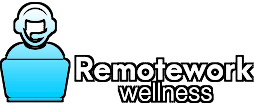
For individuals with disabilities, the dream of combining meaningful work with the freedom to explore the world is more attainable than ever. The rise of remote opportunities and accessible tools has opened doors to a lifestyle once considered out of reach. Navigating this journey, however, requires thoughtful planning and a focus on finding resources that prioritize mobility and inclusivity. Each step brings new opportunities to blend work, exploration, and personal fulfillment.
Clarify Visa and Tax Requirements
When you decide to work remotely from another country, understanding the legal and financial landscape is crucial. Be aware of visa requirements and tax obligations, as many countries require a work visa for extended stays. This can involve a detailed application process. Additionally, working abroad may lead to complex tax situations, where you might need to pay taxes both in the country you are residing in and your home country. To navigate these challenges, consider consulting with a qualified accountant or tax professional who can offer personalized advice tailored to your circumstances.
Keep Accessible Travel in Mind
Accessible travel starts with researching destinations that accommodate your specific needs and preferences. Look for accommodations, transportation options, and public spaces designed with accessibility in mind to ensure comfort and ease. Choosing travel routes that minimize physical challenges can make each journey more manageable and enjoyable. Reliable apps and platforms can also help identify accessible restaurants, attractions, and services in unfamiliar locations. Prioritizing destinations that support inclusivity allows for smoother transitions and more rewarding travel experiences.
Build Your Community
Connecting with other digital nomads can transform your journey into a richer, more engaging experience. Online communities and networking groups are excellent starting points for meeting like-minded individuals, especially in the locations you visit. Platforms dedicated to digital nomads often host forums, virtual meetups, and local events where you can exchange tips, collaborate, and forge friendships. Engaging with these groups provides access to shared resources and support networks that can ease the challenges of remote work and travel. These connections often lead to opportunities for collaboration, exploration, and mutual encouragement along the way.
Optimize Comfort with Essential Tools
Ensuring your workspace is both comfortable and supportive is essential. Investing in ergonomic tech accessories can greatly enhance your work environment. An adjustable laptop stand can help align your screen to eye level, reducing neck strain. Pairing this with an ergonomic keyboard can alleviate discomfort in your hands, making long hours of typing more manageable.
Advance Your Career Through Education
Pursuing further education can open doors to better opportunities and make you more competitive in the digital nomad world. With access to diverse career tracks, you can align your studies with high-demand fields, such as earning a computer science degree to secure higher-paying IT roles. Online programs are particularly advantageous, offering flexibility for self-paced learning that fits around your travel and work schedule. Many institutions provide resources to help you explore your options and find programs tailored to your goals. Investing in education equips you with the skills and credentials needed to thrive while working remotely.
Connect with Local Disability Groups
Building connections with local disability advocacy groups in your travel destinations is a wise move. These organizations often offer vital resources and support, making it easier to adapt to new environments. With a growing focus on accessibility, these groups can provide personalized advice on navigating local challenges. By engaging with these communities, you not only receive practical assistance but also contribute to a more inclusive travel industry.
Consider Insurance Coverage
Navigating insurance as an individual with a disability requires careful consideration to ensure coverage meets your specific needs while traveling internationally. Start by exploring policies that include comprehensive medical coverage, including pre-existing conditions and emergency care. Travel insurance with provisions for accessible equipment, mobility aids, or unforeseen cancellations can provide additional security. Opting for providers experienced in serving travelers with disabilities ensures you have the resources and guidance needed for peace of mind on your journey.
The digital nomad lifestyle, while demanding, offers unparalleled opportunities for personal and professional growth. By embracing this journey with a proactive approach, individuals with disabilities can create a life rich with diverse experiences and meaningful connections. The key lies in preparation, adaptability, and a commitment to both personal well-being and community engagement.
Eleanor Wyatt



